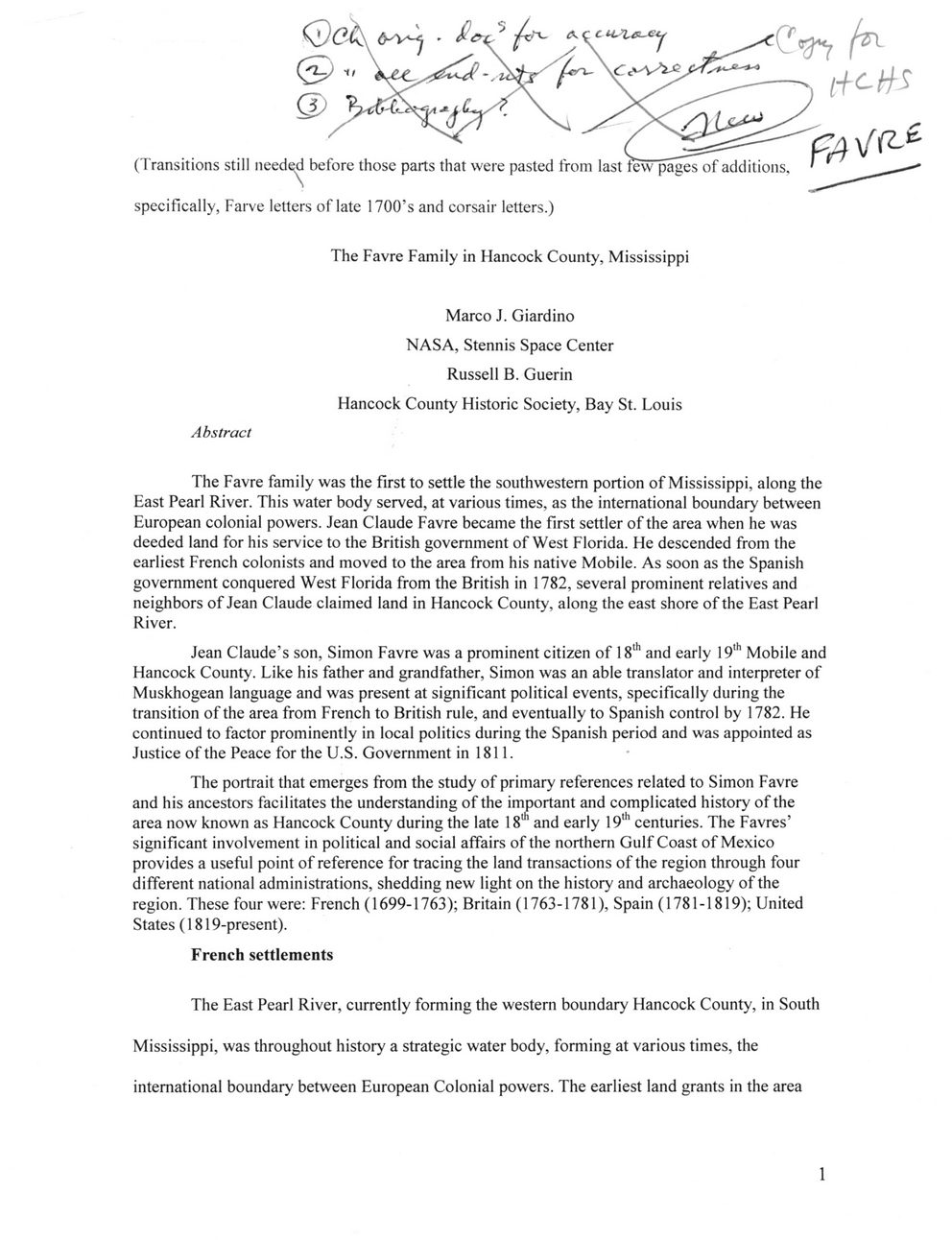This text was obtained via automated optical character recognition.
It has not been edited and may therefore contain several errors.
evv fa i+ctis (Transitions still needed before those parts that were pasted from last fevTpages of additions, specifically, Farve letters of late 1700?s and corsair letters.) The Favre Family in Hancock County, Mississippi Marco J. Giardino NASA, Stennis Space Center Russell B. Guerin Hancock County Historic Society, Bay St. Louis Abstract The Favre family was the first to settle the southwestern portion of Mississippi, along the East Pearl River. This water body served, at various times, as the international boundary between European colonial powers. Jean Claude Favre became the first settler of the area when he was deeded land for his service to the British government of West Florida. He descended from the earliest French colonists and moved to the area from his native Mobile. As soon as the Spanish government conquered West Florida from the British in 1782, several prominent relatives and neighbors of Jean Claude claimed land in Hancock County, along the east shore of the East Pearl River. Jean Claude?s son, Simon Favre was a prominent citizen of 18th and early 19th Mobile and Hancock County. Like his father and grandfather, Simon was an able translator and interpreter of Muskhogean language and was present at significant political events, specifically during the transition of the area from French to British rule, and eventually to Spanish control by 1782. He continued to factor prominently in local politics during the Spanish period and was appointed as Justice of the Peace for the U.S. Government in 1811. The portrait that emerges from the study of primary references related to Simon Favre and his ancestors facilitates the understanding of the important and complicated history of the area now known as Hancock County during the late 18 and early 19th centuries. The Favres? significant involvement in political and social affairs of the northern Gulf Coast of Mexico provides a useful point of reference for tracing the land transactions of the region through four different national administrations, shedding new light on the history and archaeology of the region. These four were: French (1699-1763); Britain (1763-1781), Spain (1781-1819); United States (1819-present). French settlements The East Pearl River, currently forming the western boundary Hancock County, in South Mississippi, was throughout history a strategic water body, forming at various times, the international boundary between European Colonial powers. The earliest land grants in the area 1

Favre The-Favre-Family-in-Hancock-County-01